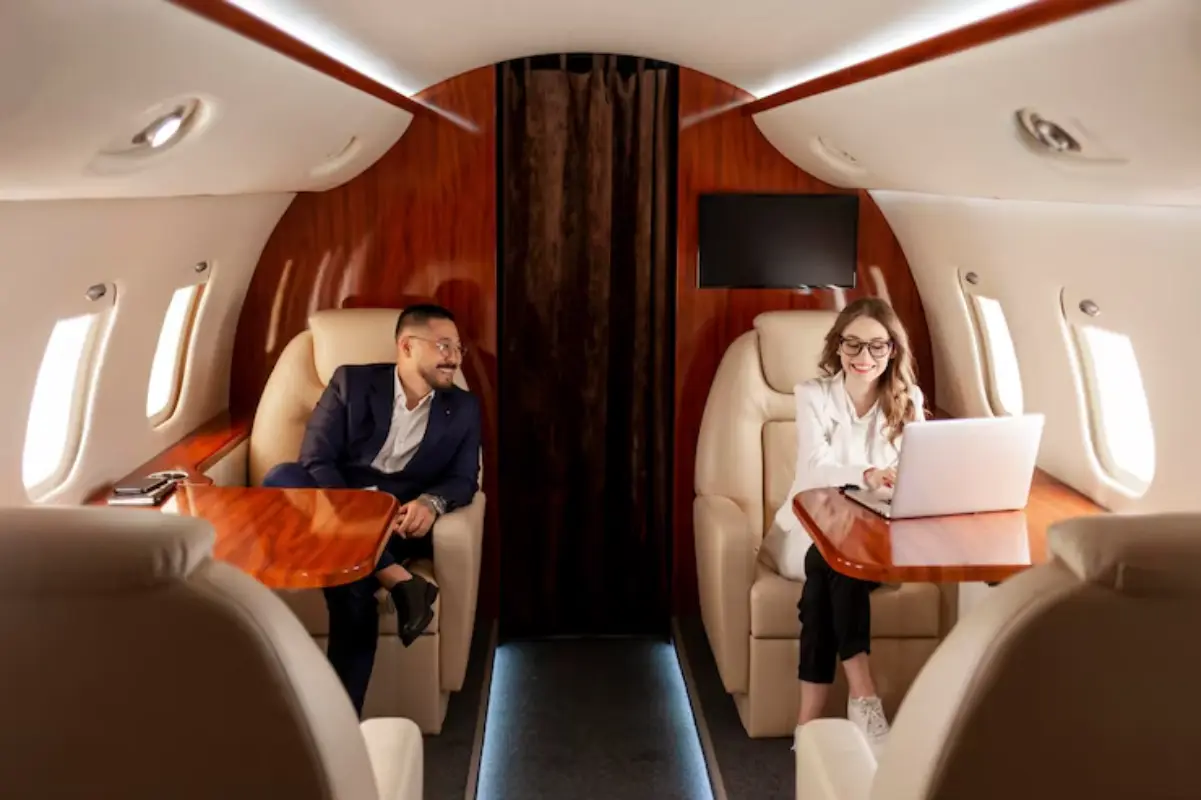The Sky’s the Limit, Redefined: Navigating the Evolving Landscape of Private Jet Luxury in the Next Ten Years
Private air travel is breaking out of its old mold, rapidly becoming an option for far more people than just Fortune 500 CEOs and celebrities. With busy schedules, unpredictable global events, and a renewed focus on comfort, travelers are looking for safer, more efficient alternatives, and demand for private flights is skyrocketing. This expansion isn’t limited to business hubs; leisure destinations, family reunions, and even remote getaways are all seeing more private jet activity.
For example, options like private jet Miami highlight a shift towards jet-set travel tailored for groups, couples, and adventure seekers. Passengers now expect to avoid crowded terminals, flight delays, and unpredictable commercial schedules, opting instead for greater flexibility and direct routes.
Industry data continues to validate this trend, showing unprecedented growth in new customer segments. Today’s private jet clients are just as likely to be business teams tackling a multi-city itinerary as they are families heading to exclusive resorts.
According to recent research, leisure use of private jets is increasing, fueled in part by hybrid work arrangements and a demand for “safe bubbles” while traveling. This appetite for on-demand, customized experiences signals that the reach of private jet travel will likely continue to grow as lifestyles and expectations evolve.
Contents
Democratizing The Skies
While private jet travel once evoked images of unattainable luxury, innovation is making it viable for many more people. Dynamic pricing and app-based booking allow seats to be reserved on short notice at a fraction of the traditional charter costs. Fractional ownership, jet cards, and membership programs now cater to a broader demographic, providing an entry point for those who want the benefits of private flights without the full financial or logistical commitment of ownership.
- Fractional ownership: Travelers own a portion of an aircraft and share access with other investors.
- Jet cards: Prepaid options allow users to lock in flight hours at fixed rates and enjoy guaranteed availability.
- Shared charters: Groups can split costs and tailor the travel experience to their collective needs.
- Empty leg flights: Unbooked returning flights are sold at significant discounts, providing last-minute options for flexible travelers.
While not yet as widespread as commercial flights, these innovations have broken down traditional barriers, allowing more people to explore the benefits of private aviation for business, leisure, or special occasions.
Sustainability: More Than Just A Buzzword
Environmental concerns used to be a secondary thought in private aviation, but that’s quickly changing. Today’s travelers are increasingly eco-conscious, demanding greener solutions and supporting operators that invest in sustainability.
Private jet companies are racing to introduce jet fuel alternatives, such as sustainable aviation fuel (SAF), which can reduce carbon emissions by up to 80% compared to traditional jet fuel. Additionally, many manufacturers are reevaluating jet design, utilizing lightweight materials and aerodynamically optimized shapes to enhance efficiency.
Regulatory agencies are setting ambitious targets for emission reductions, prompting the industry to step up its efforts in research and development. While SAF is gaining ground, exciting partnerships are working on electric and hybrid aircraft that could eventually transform short-haul private flights. Travelers, too, are showing their support through voluntary carbon offset programs, and the influence of green credentials on booking decisions is growing rapidly.
Global Growth And Emerging Markets
The demand for private aviation services is expanding rapidly across continents, with notable acceleration in regions such as Asia, the Middle East, and Africa. As more consumers reach higher income levels and international businesses seek efficient solutions for cross-border travel, new investment in airport infrastructure becomes increasingly essential.
Regional airports in secondary cities are benefiting the most, with renovations that support modern FBOs (Fixed Base Operators) and executive lounges catering to private jet clients.
These changes make direct flights to remote or previously underserved destinations more accessible. Instead of navigating large hubs and lengthy layovers, passengers can use streamlined, less congested airfields that provide privacy and convenience. For international business travelers and jet-setters alike, this means saving precious hours and enjoying a more exclusive journey.
Focus On Health, Wellness, And Personalization
The importance of wellness and hygiene in air travel has never been clearer. In response, private jet operators have fundamentally reimagined the onboard experience. HEPA air filtration systems are now commonplace, and cabins undergo rigorous sanitization protocols before and after every flight. Personalized in-flight dining ensures dietary preferences and restrictions are met, while contactless check-in and minimal crew interaction provide additional reassurance for health-conscious travelers.
The rise of bespoke service offerings also underscores the move toward hyper-personalization. Travelers can select everything from their preferred music and entertainment systems to custom bedding and temperature settings. Some advanced jets now include convertible seating, spacious work zones, and even gym or spa modules for longer journeys. Together, these advancements are redefining “luxury” to mean safety and peace of mind just as much as indulgence and style.
Economic Factors And Cost Dynamics
Charter rates and jet availability continue to be influenced by global economic conditions, fuel market volatility, and shifting travel demand. Prices often surge during peak seasons or when access to commercial alternatives is restricted, contributing to a volatile pricing landscape. Nevertheless, many frequent travelers perceive private aviation costs as a worthwhile tradeoff for minimizing travel time, avoiding crowded airports, and gaining complete itinerary flexibility.
The evolution of pay-as-you-go models and the increased availability of shared charters help manage costs for a larger pool of users. This “democratization effect” not only strengthens the industry’s customer base but also enhances the resilience and adaptability of private aviation during economic fluctuations.

